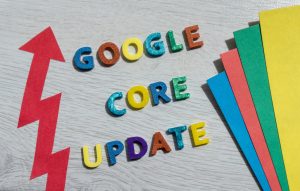Ever feel like your marketing messages are landing with a thud? You might be missing a crucial key step: not creating your marketing buyer persona.
Creating a buyer persona, or client avatar, means you are narrowing your marketing focus to your ideal customer – not trying to reach everyone.
When you try to reach everyone through your marketing, more often than not you won’t reach anyone.
You customers know – consciously or not – when you are speaking to them or speaking to an audience – and they like to feel special!
This is where the concept of a marketing buyer persona comes in. This buyer persona or client avatar is your brands ‘ideal customer’.
But StoryBrand takes this marketing tool one step further.
What is a Marketing Buyer Persona?
A marketing buyer persona is a fictional character representing your ideal customer.
They’re a composite sketch that captures their demographics, goals, desires, and frustrations, and you can create your own using our template form.
By understanding this persona, you can craft messaging that resonates with their specific needs and challenges.
The great thing is, you can have multiple marketing buyer personas if your business caters to different customer segments; but for many brands we recommend only making 3.
Each client avatar becomes a guiding star, helping you tailor your marketing efforts for maximum impact.
Challenge:
Write down 3 names that will become the draft for your buyer persona.
Once you have written these names, follow the steps outlined in this article to create your client avatar.
StoryBrand Marketing Buyer Persona vs. Traditional Marketing Buyer Persona
While both traditional marketing buyer personas and StoryBrand marketing buyer personas aim to understand your ideal customer, there’s a key distinction in their approach.
A traditional buyer persona focuses on demographics and psychographic.
It paints a picture of who your ideal customer is (age, income, interests) and how they think (values, goals).
This information is valuable, but it doesn’t necessarily tell the whole story.
Whereas the StoryBrand marketing persona positions your brand within a narrative structure, with your ideal customer as the hero on a journey.

It delves into your customers’ pain points, their desires, and where they are in their lives – working, studying, parents, etc.
A StoryBrand buyer persona builds on the traditional approach and digging deeper than surface level.
It centers around the StoryBrand Framework and helps you to further build your brandscript.
“Traditional buyer personas look at the surface of your customer. StoryBrand buyer personas dig deep into the heart and mind of your customer.”
So, what does this look like in practice?
– A traditional buyer persona might tell you that Sarah is a busy professional mom who values convenience and healthy eating.
– A StoryBrand buyer persona would expand on this, portraying Sarah as the hero facing the villain of time constraints and unhealthy meal options.
– She wants to provide healthy food options for her family, instill healthy habits in her children, all while balancing her career and life.
Convenience and healthy eating are only surface level problems.
Digging deeper, the real problem faced is time, the lack of knowledge or options, and the burden she feels as a career woman and mom.
Your brand, then, becomes the guide who helps Sarah overcome these obstacles and achieve her desired outcome: a balanced life with nutritious meals for her family.
By integrating this narrative element, StoryBrand buyer personas help you create marketing messages that are not just informative, but also emotionally engaging.
They tap into your ideal customer’s desire to be the hero of their own story, making your brand a natural fit in their journey.
Why Use a StoryBrand Buyer Persona?
Imagine trying to have a conversation with everyone in a crowded room. It’s overwhelming and ultimately ineffective.
You need to target a small audience, a group of people whose attention you can capture.
A niche target audience.

Buyer personas help you avoid the marketing pitfall of casting a wide net by allowing you to have:
- Sharper Targeting Meaning Stronger Impact:
Generic marketing that speaks to everyone, resonates with no one. Your customers want to feel special.
Whether that is as the sole person in a crowd, or a sense of belonging in an audience.
A StoryBrand buyer persona allows you to laser-focus your messaging on your ideal customer’s specific needs and pain points.
This targeted approach translates to marketing that’s more impactful and drives better results.
- Speak Their Language, Understand Their Journey:
By understanding your persona’s goals, desires, and frustrations, you gain invaluable customer empathy.
This knowledge empowers you to craft marketing that speaks directly to their aspirations and resonates with the challenges they face.
It’s like having a conversation with a friend, not a faceless audience – or in your customers case:
They feel like they’re talking to a real person, not a faceless machine.
- Craft Compelling Stories, Drive Engagement:
StoryBrand marketing buyer personas go beyond demographics. They weave your ideal customer into a narrative, positioning them as the hero on a journey.
This allows you to create marketing messages that are not just informative, but also emotionally engaging.
By tapping into their desire to be the hero of their own story, your brand becomes a natural guide, propelling them towards their desired outcome.
Storytelling is a primal human force. By weaving your ideal customer into a narrative as the hero of their own story, you tap into this inherent desire to overcome obstacles and achieve victory.
Your StoryBrand buyer persona becomes more than demographics; it becomes a character on a journey.
When you position your brand as the trusted guide who empowers your persona to conquer their villain (their challenges), your marketing transforms into a captivating story that compels action.
Craft Your Ideal Customer: A Step-by-Step Guide to Building Powerful Buyer Personas
Creating your ideal customer isn’t difficult, it can actually be quite fun and easy!
Here’s a breakdown of the essential steps involved in crafting a compelling StoryBrand buyer persona.
Think of it as a roadmap to guide you in developing a character who embodies your ideal customer!
Step 1: Meet Your Hero – Name & Demographics
Every captivating story needs a hero, and your buyer persona is no different! Giving them a name personalizes the experience and fosters a deeper connection.
Consider choosing a name that reflects the demographics you have analyzed and your target audience’s age group and interests.
For instance, you might have Sarah, the busy professional mom juggling work, kids, and a healthy lifestyle.
Or David, the tech-savvy entrepreneur constantly on the lookout for innovative solutions to streamline his business.

Here are some key details to flesh out your persona:
- Age & Life Stage:
Consider your ideal customer’s age range and life stage.
Are they young professionals just starting their careers, or seasoned veterans nearing retirement?
Are they single or married with children?
Understanding their life stage will influence their priorities and challenges.
- Location:
Where does your ideal customer live?
Is it a bustling urban center, a suburban neighborhood, or a rural town?
Knowing their location can help tailor your marketing messages and channels to resonate with their specific environment.
- Income Level:
While income isn’t the sole factor, understanding your ideal customer’s income level helps determine their purchasing power and the types of products or services they might be interested in.
- Occupation:
What does your ideal customer do for a living?
Their profession can shed light on their skills, challenges, and the pain points they encounter in their day-to-day work.
- Marital Status & Family Life:
While not always essential, understanding your ideal customer’s marital status and family life can provide additional context.
Are they single and focused on personal career goals, or do they have a family with specific needs and priorities?
Step 2: Understanding Their World – Goals, Desires & Pain Points
What makes your ideal customer tick? What are their long-term aspirations and deepest desires? What challenges keep them up at night?
Uncovering these motivations is key to crafting messaging that resonates on a personal level.
Here are some questions to guide you in this exploration:
- Goals:
What are their long-term aspirations?
What does achieving success look like for them?
Is it financial security, career advancement, work-life balance, or something else entirely?
- Desires:
What do they crave in life?
What would make their life easier or more fulfilling?
Do they yearn for more time with family, a sense of accomplishment, or a creative outlet?
- Pain Points:
What struggles do they face on a daily basis?
What keeps them up at night? Are they frustrated with inefficiency, lack of control, limited resources, or feeling overwhelmed?
What are their current solutions, and what are the shortcomings they experience?

Pro Tip:
Conduct online surveys or interviews with existing customers or potential customers in your target market.
This will provide valuable real-world insights into their motivations and challenges.
Consider offering incentives like discounts or free trials to encourage participation.
Social media listening tools can also be helpful to understand the online conversations happening around your industry and identify common pain points.
Step 3: Charting the Hero’s Journey – Their Path to Your Brand
Imagine your persona’s journey as a classic story arc, with your brand emerging as the trusted guide who helps them overcome obstacles and achieve their desired outcome.
Here are some key aspects to consider:
- The Ultimate Goal:
What is the mountain your persona is trying to climb?
What is the ultimate objective they’re striving to achieve?
- The Villain (Challenges):
What obstacles or roadblocks stand in their way?
Is it a lack of time, limited resources, technical expertise, or feeling overwhelmed by information overload?
- The Guide (Your Brand):
How can your brand empower them to overcome these challenges?
What unique value proposition does your product or service offer that positions you as the trusted guide on their journey?
Step 4: Real-World Market Research
Market research isn’t just for big corporations! For small brands like yourself, it is even more important to create a marketing buyer persona.
Here are some ways to gather real-world insights to enrich your buyer persona:
- Conduct online surveys or polls with your target audience.
Social media platforms and email marketing tools can be leveraged to distribute surveys and polls to your existing customer base or potential customers who fit your target demographic.
- Analyze customer reviews and social media conversations related to your industry.
Pay attention to the language your target audience uses, the challenges they express, and the solutions they seek.
This can provide valuable insights into their pain points and preferences.
- Interview existing customers to understand their experiences and challenges.
Schedule informal chats with existing customers to gain a deeper understanding of their decision-making process, what led them to your brand, and how your product or service has (or hasn’t) helped them achieve their goals.
Step 5: Adapt and Evolve: Refine & Repeat
Your buyer persona is a living document, not set in stone.
As you gather more customer data and your business evolves, revisit and refine your persona to ensure it stays relevant.

Here are some tips for keeping your persona up-to-date:
- Regularly review customer feedback and market research.
Pay attention to any emerging trends or shifts in your target audience’s needs and preferences.
- Conduct A/B testing on your marketing messages to see what resonates best.
By testing different variations of your marketing copy and creatives, you can gain valuable insights into what language and messaging best connects with your ideal customer.
- Update your persona’s details as your business or target market evolves.
As your business grows and expands its offerings, your ideal customer base might change as well.
Be prepared to adapt your persona to reflect these changes.
By following these steps and continuously refining your StoryBrand buyer persona, you’ll develop a powerful tool that unlocks the door to targeted marketing that resonates with your ideal customer and propels your business forward.
“Remember, your buyer persona is a guide, not a rigid rulebook.”
As you gather more data and learn from your marketing efforts, be flexible and adapt your persona to ensure it continues to be a valuable asset in your marketing strategy.
3 Costly Mistakes Businesses Make When Creating Buyer Personas
Developing buyer personas is a crucial step in crafting effective marketing strategies.
However, businesses can fall into some common traps that render their personas less useful.
3 mistakes to avoid when it comes to creating your buyer persona include:
Mistake #1: Skipping Buyer Personas Altogether
Many businesses make the decision to avoid creating a buyer persona altogether because it is extra work, however this is a shortcut to marketing oblivion.
Neglecting your buyer persona can have detrimental effects on your business, including:
- Scattered Targeting:
Without a clear picture of your ideal customer, your marketing efforts become a scattershot approach.
You might be reaching a broad audience, but failing to connect with anyone deeply.
This translates to wasted advertising dollars and missed opportunities to engage your true target market.
- Ineffective Messaging:
Imagine crafting a message in a bottle and throwing it into the ocean. Without buyer personas, your marketing messages lack direction.
You won’t know what resonates with your ideal customer, leading to generic content that fails to capture their attention or address their specific needs.
- Missed Opportunities for Personalization:
Today’s consumers crave personalized experiences. Buyer personas unlock the door to personalization.
By understanding your ideal customer’s demographics, desires, and pain points, you can tailor your marketing messages, website content, and even product offerings to resonate on a deeper level, fostering stronger customer connections and loyalty.

Mistake #2: Focusing Solely on Surface-Level Data
Demographics like age, income, and location are a good starting point, but they’re just one piece of the puzzle.
Here’s why relying solely on these factors creates an incomplete picture of your ideal customer:
- Missing the Emotional Core:
Demographics paint a picture of who your ideal customer is, but they don’t tell you why they buy.
Effective marketing taps into the emotional core of your customer’s journey.
-
- What are their aspirations?
-
- What frustrations do they face?
-
- What desires keep them up at night?
Buyer personas that delve deeper, uncovering these emotional drivers, allow you to craft marketing messages that connect on a human level.
- Ignoring Pain Points:
Understanding your ideal customer’s pain points is crucial for crafting marketing that resonates.
Demographics alone won’t reveal these challenges.
A well-developed buyer persona dives into the specific problems your ideal customer faces.
This allows you to position your brand as the solution that helps them overcome these obstacles and achieve their desired outcome.
- Generic Messaging that Falls Flat:
Without understanding your ideal customer’s motivations and desires, your marketing messages become generic and forgettable.
They might reach the right age group or income bracket, but they won’t speak to their specific needs or aspirations.
This leads to a lack of engagement and ultimately, missed conversions.
Mistake #3: Failing to Adapt Your Buyer Persona
The market and your business are living organisms, constantly evolving.
Sticking to the same buyer avatar you had 10 years ago can drastically affect your business.
The 20yr olds are have a young family; the young mum is now parenting teenagers, the students are now career people.
Every 2-3yrs, take a look at your avatar and make the necessary shifts.
Here’s why clinging to a static buyer persona created years ago is a recipe for marketing stagnation:
- Market Shifts:
Customer preferences and industry trends can change rapidly.
A buyer persona created 5 years ago might not reflect the current needs and challenges faced by your ideal customer.
Regularly revisiting and refining your persona ensures your marketing messages remain relevant and continue to resonate with your target audience.
- Business Growth:
As your business grows and expands its offerings, your ideal customer base might evolve as well.
Your buyer persona should reflect this growth, potentially encompassing new demographics or motivations that weren’t relevant in the past.
- Missed Opportunities for Innovation:
A stagnant buyer persona limits your ability to identify new market opportunities.
By continuously gathering customer data and refining your persona, you can discover new customer segments or evolving needs within your existing target audience, opening doors for innovative marketing campaigns and product development.
By avoiding these mistakes and investing in well-developed, adaptable buyer personas, you’ll unlock a powerful tool for crafting targeted marketing that resonates with your ideal customer, propelling your business forward.
Creating a marketing buyer persona can be a powerful tool, but it can also feel overwhelming if you’re starting from scratch.
At Results & Co, we understand the importance of speaking directly to your ideal customer.
That’s why we offer a complimentary 2-hour consultation where we’ll guide you through the process of crafting a clear picture of your perfect client.
Stop marketing to a crowd and start meaningful conversations with your audience.
Book your free consultation today and discover the power of buyer personas for your business.
See how our team can drive an insane amount of highly targeted traffic to your website and then convert it.
Websites that sell:
Most websites don’t convert, your’s will.
SEO that ranks:
Get on the first page of Google, guaranteed.
Ads that work:
Clear predictable returns.
Content Marketing:
Our team will create the images, write the articles and grow your brand.










